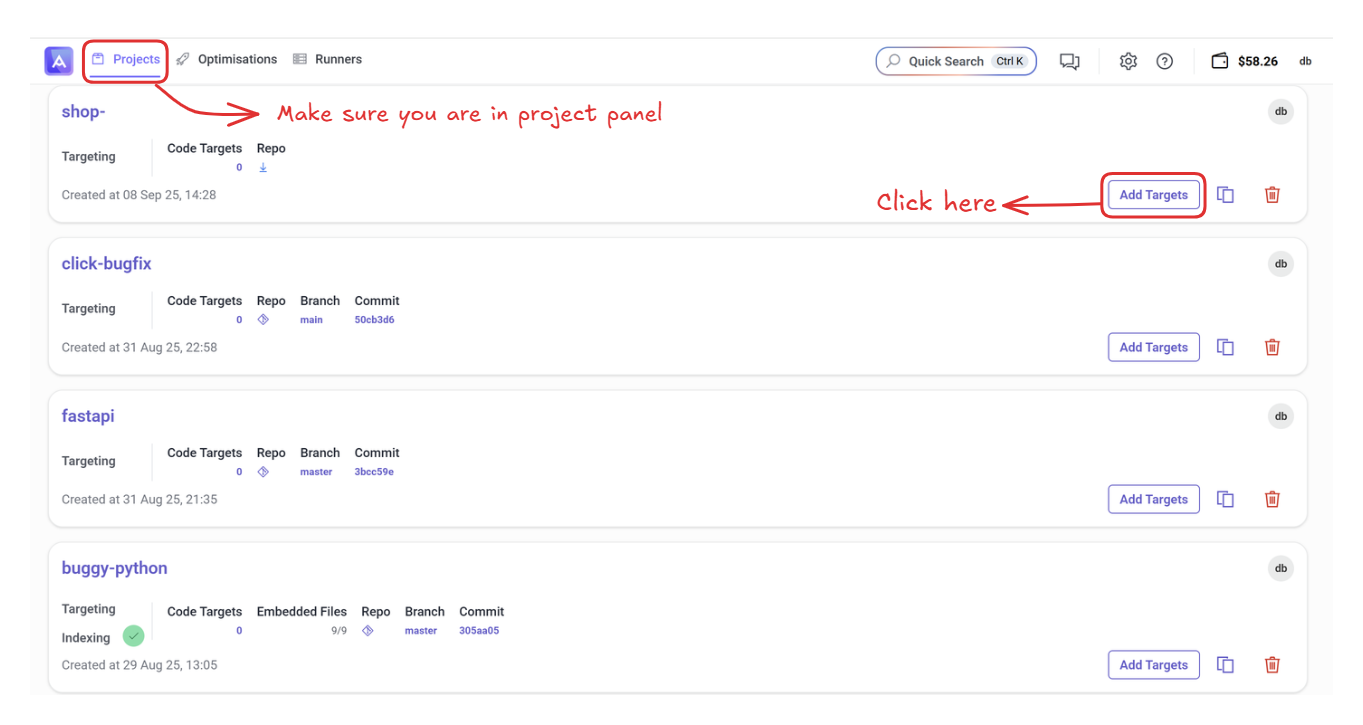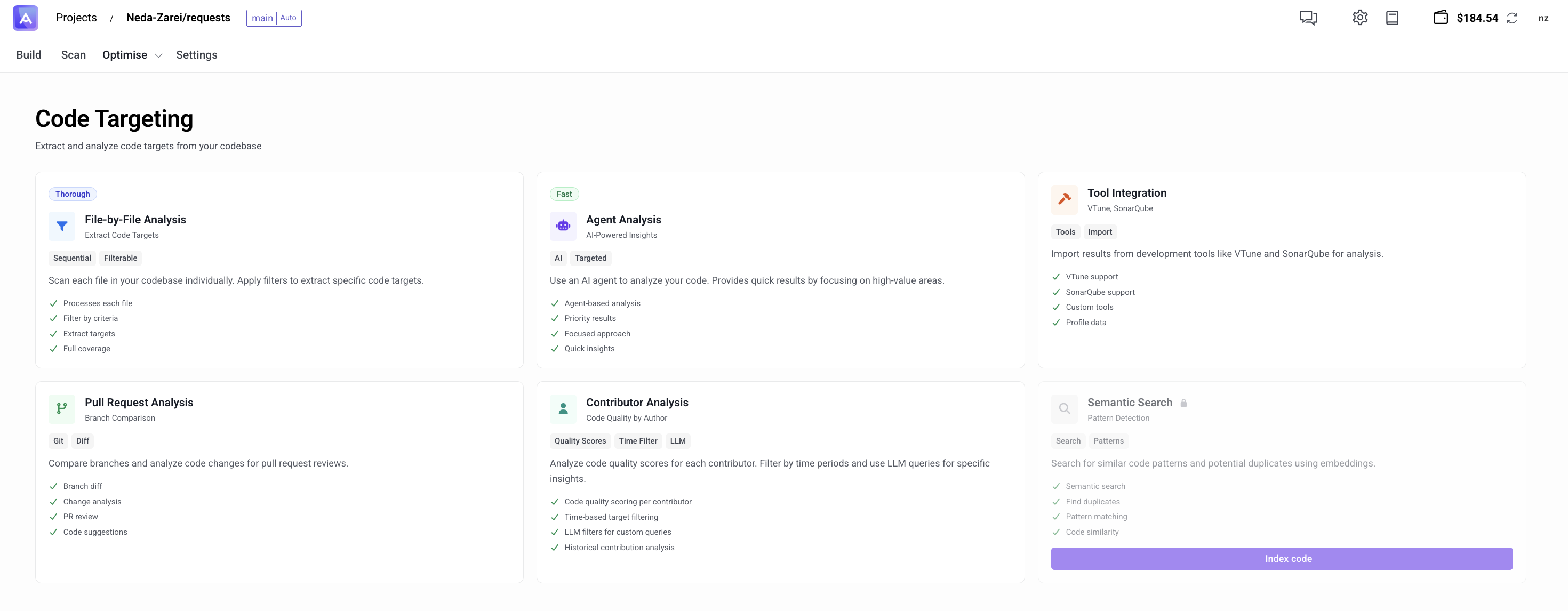Code Targeting Overview
Artemis can work with codebases of any size, from small projects to large enterprise applications. Extract a subset of your codebase to target Artemis on specific sections and manage the AI context effectively.
For smaller codebases, you can simply import and analyze the entire project. However, for larger codebases, you can use the filtering options to focus on specific areas of interest, such as:
- Particular modules or components
- Files matching certain patterns
- Code sections with specific characteristics
- Areas identified by performance profiling or 3rd party tools such as SonarQube or Coverity
This selective approach helps reduce processing time and resource usage, and focus on the most important or problematic areas.
Select files for extraction
In order to start the extraction, click on the Add targets button on the right corner of your codebase entry in Projects:

Clicking the Add targets button will take you to a page where you can choose from multiple extraction methods:

Targeting Methods
File-by-File Analysis
Analyze individual files to identify optimization opportunities:
- File-level Metrics: Analyze file-level performance and quality metrics
- Complexity Analysis: Identify files with high complexity
- Size Analysis: Identify files that are too large or too small
- Dependency Analysis: Analyze file dependencies and relationships
Tool Integration
Integrate with external tools for enhanced analysis:
- SourceKon Integration: Use SourceKon for profiling and performance analysis
- Static Analysis Tools: Integrate with static analysis tools
- Dynamic Analysis Tools: Integrate with dynamic analysis tools
- Custom Tools: Integrate with custom analysis tools
Contributor Analysis
Analyze code contributions to identify optimization opportunities:
- Commit Analysis: Analyze commit patterns and frequency
- Author Analysis: Analyze code contributions by author
- Change Analysis: Analyze code changes over time
- Pattern Analysis: Identify patterns in code contributions
Agent Analysis
Use AI agents to analyze code patterns and behaviors:
- Pattern Recognition: Identify common code patterns
- Behavior Analysis: Analyze code behavior and usage
- Anomaly Detection: Detect unusual code patterns
- Recommendation Generation: Generate optimization recommendations
Pull Request Analysis
Analyze pull requests to identify optimization opportunities:
- PR Metrics: Analyze pull request metrics and patterns
- Code Review Analysis: Analyze code review feedback
- Merge Analysis: Analyze merge patterns and conflicts
- Quality Trends: Track quality trends over time
Semantic Search
Use semantic search to find optimization targets:
- Concept-based Search: Search for code by concept rather than text
- Pattern Matching: Find code patterns that match optimization criteria
- Context-aware Search: Search with context awareness
- Intelligent Recommendations: Get intelligent optimization recommendations
Select the extraction method that best suits your needs.
Next Steps
After identifying optimization targets: